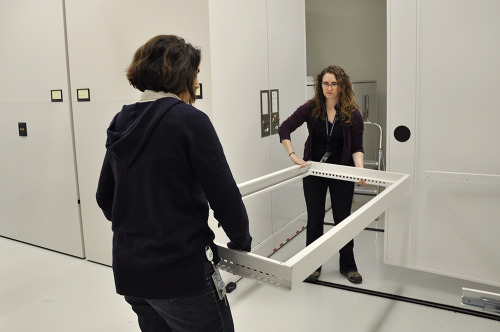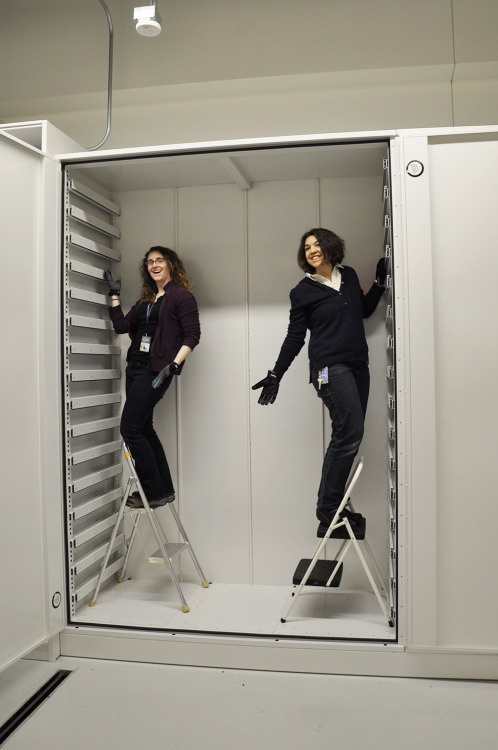#art storage
Rolled textiles comprise approximately one third of The Textile Museum’s collections in storage, so it is no surprise that our staff are so excited for an amazing upgrade to the way the museum cares for these important pieces.
At the conservation and collections resource center, rolled textiles can now be stored suspended on rods within adjustable bottomless drawers inside of cabinets. This method of storage has many advantages:
- By suspending the rolls on rods rather than resting them on a surface, we reduce the amount of stress on these fragile pieces.
- The drawers can be adjusted for any spacing, so both thicker and thinner rolls can easily find a home. The flexibility of these cabinets helps us efficiently use the cabinet space.
- The depth of the drawers (32 inches) allows up to 8 rolls to be suspended per drawer.
- The height of the cabinets (9 feet) maximizes vertical space.
In these photos, Registrar Rachel Shabica and Associate Registrar Tessa Lummis adjust the spacing of a rolled textile storage cabinet—from its factory setting to a new configuration that is more conducive to fitting a variety of roll circumferences.
Shabica and Lummis unscrew all of the drawers from the gliders that let them slide in and out of the cabinet, and then unscrew the gliders from the cabinet walls. Next, the registrars remove the gliders from the walls and reset them in an even spacing, utilizing the full height of the cabinet. Finally, they replace the drawers onto the moveable portion of the gliders and screw them back in place.
Configuring cabinets is a lot of hard work, but we could not be happier to have this upgraded storage system!
Post link










